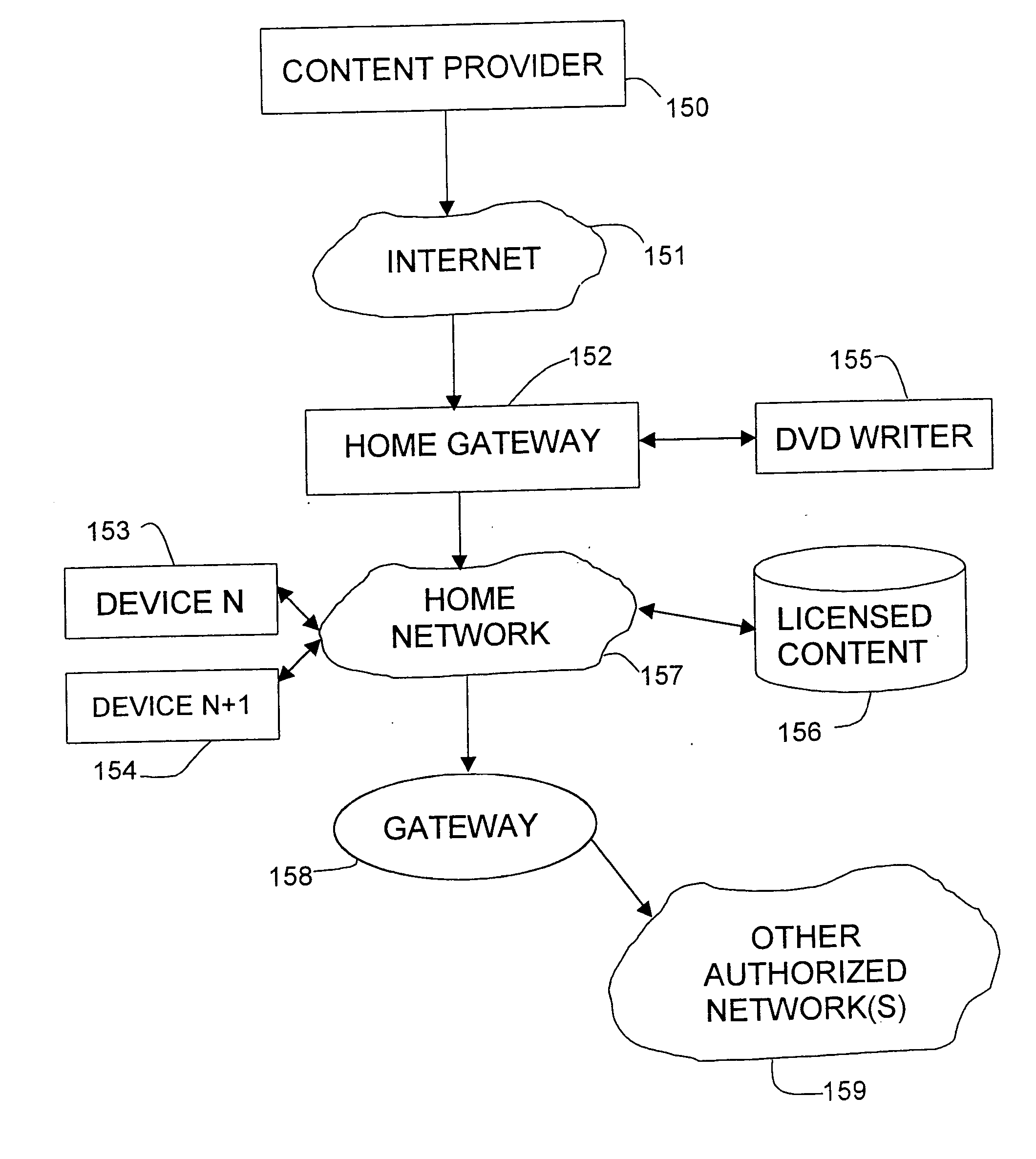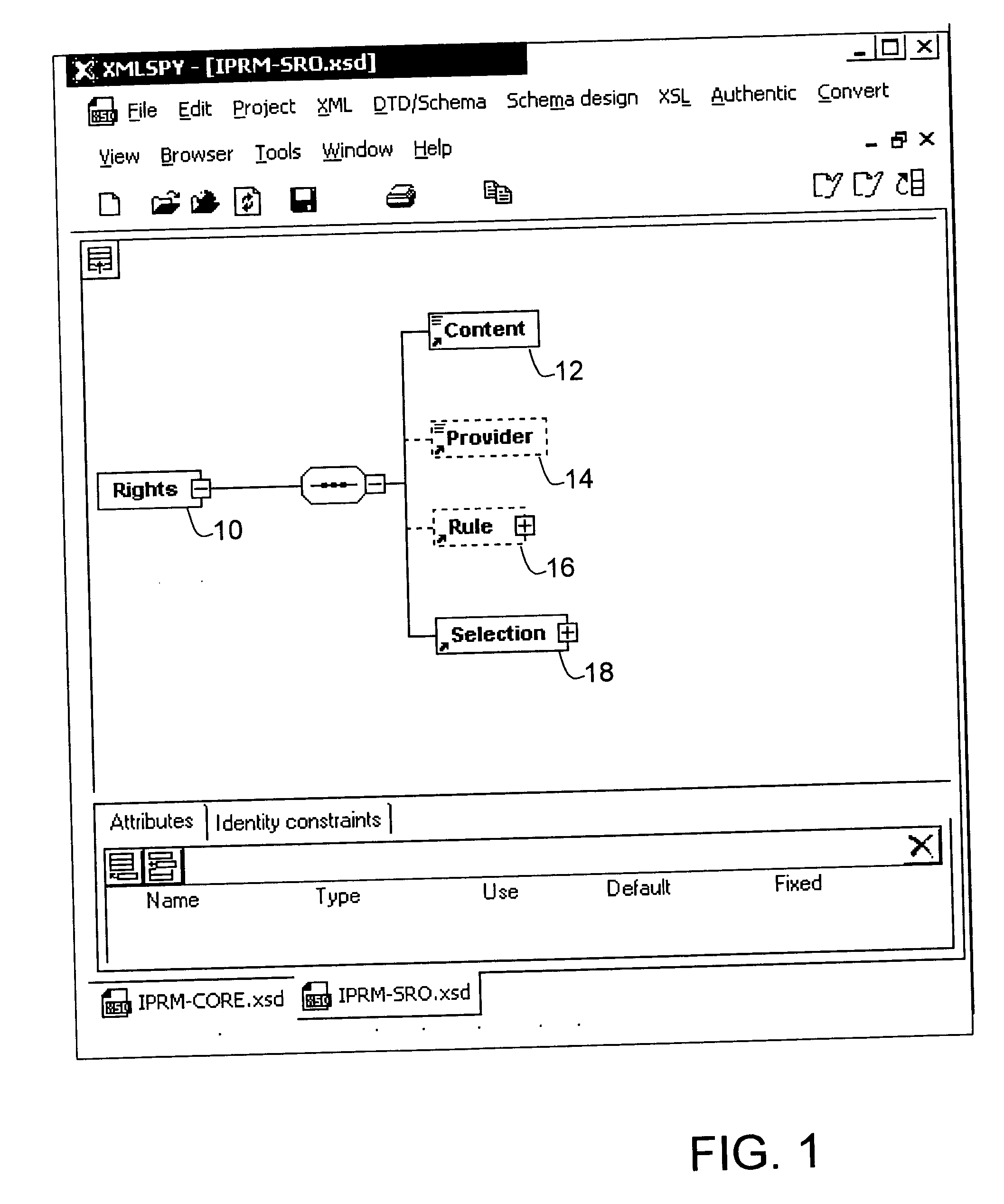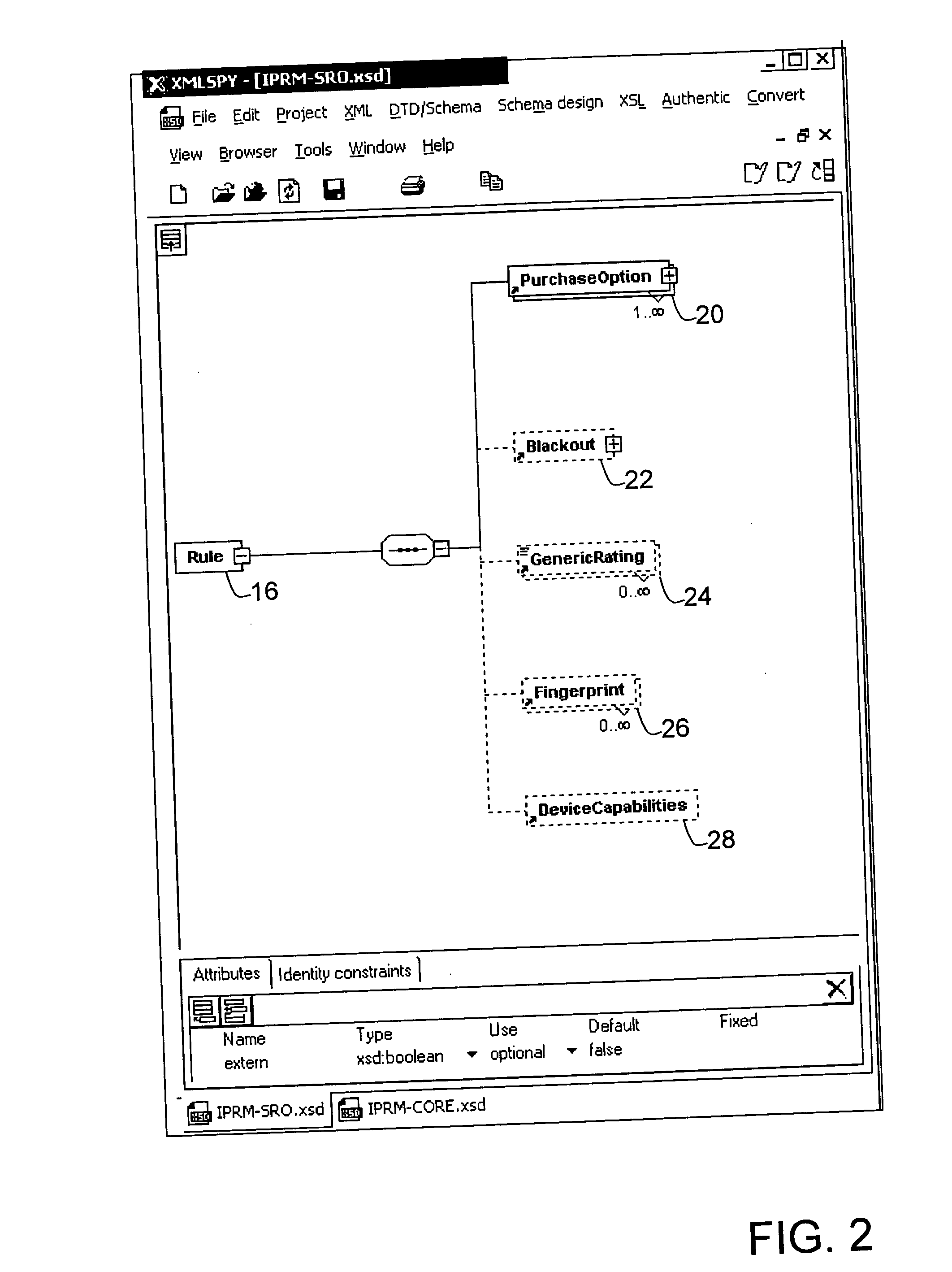Separation of copy protection rules for digital rights management
a copy protection and digital rights technology, applied in the field of digital rights management, can solve problems such as difficulty for authorized (e.g., licensed) users to use content on different devices on their authorized domains
- Summary
- Abstract
- Description
- Claims
- Application Information
AI Technical Summary
Benefits of technology
Problems solved by technology
Method used
Image
Examples
Embodiment Construction
[0030] The growing interest in streaming distribution of multimedia content over Internet Protocol (IP) networks brings a need for secure delivery of such content to legitimate customers. For purposes of the present disclosure, the term IP Rights Management (IPRM) encompasses conditional access as well as the various issues surrounding persistent access, defined as access to content after the customer has received and decrypted it the first time. Persistent access can be accommodated, for example, by storing the decrypted content on a hard drive provided, e.g., in a Personal Video Recorder (PVR) or Personal Computer (PC). IPRM, which is within the realm of Digital Rights Management (DRM), can be viewed as a generalization of conditional access technology.
[0031] The present disclosure describes Extensible Markup Language (XML) interfaces that are used by external systems in order to use services provided by the IPRM system. These XML documents need to be processed and understood by ...
PUM
 Login to View More
Login to View More Abstract
Description
Claims
Application Information
 Login to View More
Login to View More - R&D
- Intellectual Property
- Life Sciences
- Materials
- Tech Scout
- Unparalleled Data Quality
- Higher Quality Content
- 60% Fewer Hallucinations
Browse by: Latest US Patents, China's latest patents, Technical Efficacy Thesaurus, Application Domain, Technology Topic, Popular Technical Reports.
© 2025 PatSnap. All rights reserved.Legal|Privacy policy|Modern Slavery Act Transparency Statement|Sitemap|About US| Contact US: help@patsnap.com



